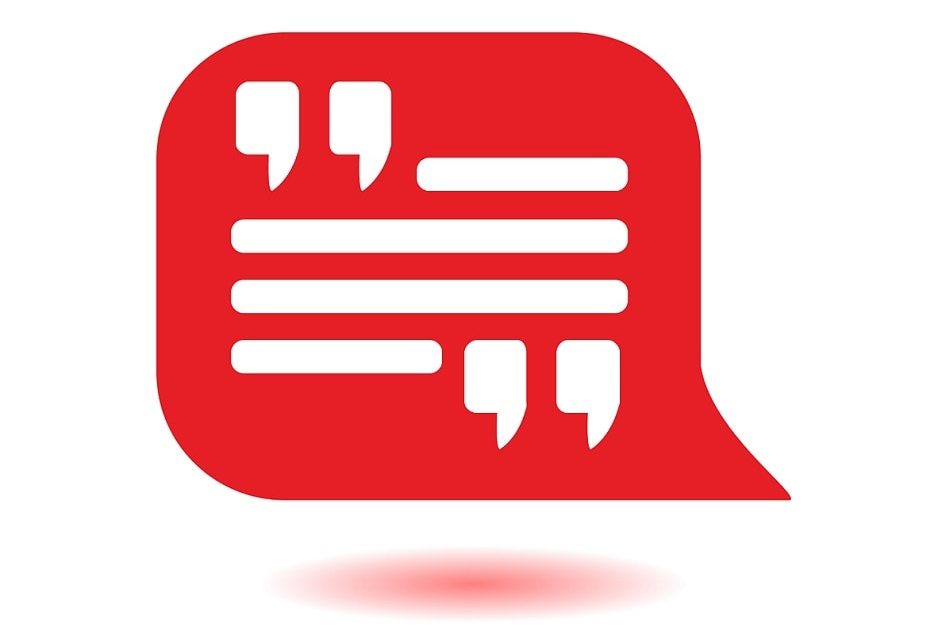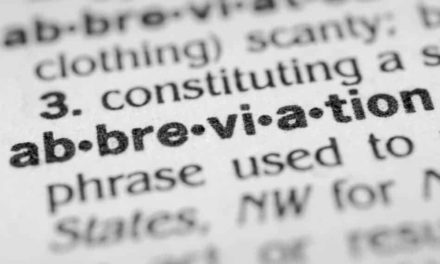How To Cite ISO, ANSI, CFR & Other Industry Standards & Guidelines
Although there is no universally correct style for citing industry standards and guidelines in academic and scientific research documents, it is nonetheless important to provide citations and references for these resources that are as accurate, thorough and consistent as possible. Industry or quality standards and guidelines are often cited to confirm compliance with or discuss the implications of those standards and guidelines, so there is no margin for error, and readers who wish to consult the original documents must be given the information they need to find the exact versions of the standards and guidelines used by an author. In some cases, the text of a particular standard or guideline will offer helpful information about how to cite it, but far more common is the need to cite standards and guidelines in keeping with particular documentation styles dictated by the organizations responsible for the standards, the conventions of a discipline, the requirements of specific style manuals or the preferences of publishers and instructors.
Generally speaking, the following types of information should be provided for an industry standard or guideline cited in a research document:
• The name of the organization or agency that made the standard
• The name or title and number of the standard
• The year in which the standard was established, approved and/or published
• The specific version or edition of the standard consulted by the author
• The publisher and place of publication
• The online location of the standard and perhaps when it was accessed by the author
Not all of these will apply to every standard or guideline that could be cited, just as not all of them will usually be necessary to fulfill the requirements of a specific citation style. The arrangement and presentation of the different bits of information vary considerably across referencing methods as well. I have therefore listed in alphabetical order eight different documentation styles that are commonly used for constructing references to standards and guidelines. In each case I have provided basic instructions along with at least one example for producing a complete bibliographical reference in a bibliography or list of references or works cited. In most cases detailed advice for in-text citations of industry standards and guidelines is offered as well; when it is not, following the style that is used for other in-text citations in a research document is the best strategy. Please note that titles and other text surrounded here by underscores (_) should be placed in italic font, which may not be displayed accurately in all web formats.
APA Style
The documentation style recommended by the American Psychological Association (APA) uses an author–date system of in-text citation with an accompanying list of references that is organised alphabetically according to author names. When citing a standard or guideline, the author name is replaced with the name of the organization that made or established the standard, with the pattern of information taking this form:
• Organization Name. (Year of publication). _Title of the standard_ (Standard Number). Retrieved from http://mmmmmmmm
With specific information inserted, a complete APA reference to an ISO standard looks like this:
• International Organization for Standardization. (2006). _Greenhouse gases – Part 1: Specification with guidance at the organization level for quantification and reporting of greenhouse gases_ (ISO Standard No. 14064-1:2006). Retrieved from http://www.iso.org/standard/38381.html
For in-text citations, the organization name is provided, followed by a comma and the year of publication, with all, part or none of the citation in parentheses:
• According to the standards for reporting greenhouse gases (International Organization for Standardization, 2006)
• According to the International Organization for Standardization’s guidelines for reporting greenhouse gases (2006)
• According to the 2006 standards for reporting greenhouse gases (International Organization for Standardization)
• According to the International Organization for Standardization’s 2006 guidelines for reporting greenhouse gases
The abbreviated form of the organization’s name can be used for in-text citations, but the name should be written out in full on first use:
• According to the standards for reporting greenhouse gases established by the International Organization for Standardization (ISO, 2006)
The abbreviated form can then be used alone in subsequent citations of the same or other ISO standards:
• According to the ISO guidelines for reporting greenhouse gases (2006)
However, the abbreviated form should not be used for the complete reference that appears in the list of references.
ASTM Style
ASTM originally stood for American Society for Testing and Materials, but the breadth of its geographical and intellectual range now belies that name. The ASTM International website provides a preferred citation format for complete references to ASTM standards. This consists of:
• Base Designation with Edition or Version, “Title of Standard,” Publisher, City and State or Province of Publication, Year of publication, DOI, Publisher Website
A bibliographical reference to a particular standard can therefore be formatted in this way:
• ASTM Standard B66-15, “Standard Specification for Bronze Castings for Steam Locomotive Wearing Parts,” ASTM International, West Conshohocken, PA, 2015, DOI: 10.1520/B0066-15, www.astm.org
CFR Style
Citations from the U.S. Code of Federal Regulations (CFR) use a legal style and can be very short, consisting of no more than the title number of the regulation, the abbreviated reference ‘C.F.R.’ and the section number and year. This takes the following form:
• 40 C.F.R. § 1036.108 2012
While this format is appropriate for unnamed regulations and can also be used for named regulations, the name (if there is one) is sometimes cited as well, especially when a regulation is commonly known by name or the additional information might be particularly helpful for readers who need to identify the regulation. The longer form would look like this:
• Greenhouse Gas Emission Standards, 40 C.F.R. § 1036.108 2012
In some cases the year is enclosed in parentheses regardless of whether the name is used or not:
• 40 C.F.R. § 1036.108 (2012)
• Greenhouse Gas Emission Standards, 40 C.F.R. § 1036.108 (2012)
Whichever format is adopted for the complete bibliographical reference to a regulation, it is essential to use the same format in any author–date or note-based citations that appear within the text. For example, an APA in-text citation to the CFR regulation used above would look like this without the name:
• We began by considering emission standards (40 C.F.R. § 1036.108, 2012)
An APA in-text citation designed to match the full reference that uses the regulation name would take this form instead:
• We began by considering the federal regulation (Greenhouse Gas Emission Standards, 2012)
Chicago Style
The Chicago Manual of Style (sometimes abbreviated as CMOS) is used for citations and references across a wide range of disciplines and is particularly recommended by the American National Standards Institute (ANSI). Unfortunately, the Chicago Manual does not provide examples or specific advice for citing industry standards and guidelines. Instead, standards are treated either as books or journals depending on how they are published, so a standard published as a stand-alone publication would be cited much as a book is, whereas a standard published in a periodical would be cited much as a journal article is. The examples below use an ANSI standard that is treated like a book.
Chicago style documentation includes two different systems of citation. One is a notes and bibliography system that provides in-text citations in numbered footnotes or endnotes, usually along with a bibliography of complete references. It is used predominantly by researchers in history, literature and the arts. The other is an author–date system that provides in-text citations parenthetically along with a list of references and tends to be used in the physical, natural and social sciences.
Notes & Bibliography
In the notes and bibliography system, the complete reference in the bibliography should take this form:
• American National Standards Institute. _American National Standard for Information Sciences – Abbreviation of Titles of Publications_. ANSI, Z39.5-1985. New York, NY: ANSI, approved October 1, 1984.
The information is arranged and punctuated differently in the notes, with a complete footnote or endnote reference to the same standard looking like this:
• _American National Standard for Information Sciences – Abbreviation of Titles of Publications_, ANSI, Z39.5-1985 (New York, NY: American National Standards Institute, approved October 1, 1984), 3.
The number at the end could be a page or section number or some other form of specific locator for a quotation or precise citation.
For subsequent in-note citations of the same standard, a shortened title will suffice, though a page number or other locator will still be necessary for precise references and quotations. The specific form of the short title may depend on the need to distinguish it from similar titles and standards, but something like this might work:
• _Abbreviation of Titles_, 6.
This short title must remain consistent throughout a research document. The Chicago Manual notes that the short version of a reference may suffice for first citations as well if a bibliography providing complete references for all the sources cited in a document is included. Alternatively, if every source cited is given a full reference in the notes, a bibliography may not be necessary at all.
Author–Date
For the Chicago author–date system, the vital bits of information for connecting in-text citations with complete references in the list are the author name and the publishing date. A complete bibliographical reference to a standard or guideline treated as a book would therefore move the year of publication or approval date up to immediately after the author name, which for an industry or quality standard is the organization that created and published the standard. A logical form would therefore be:
• American National Standards Institute. October 1, 1984._American National Standard for Information Sciences – Abbreviation of Titles of Publications_. ANSI, Z39.5-1985. New York, NY: ANSI.
In-text citations are usually enclosed wholly or partially in parentheses, but need not be, so all three of the following examples would be appropriate for citing the standard above:
• Unfortunately, the journal does not appear in the list of abbreviations (American National Standards Institute October 1, 1984)
• Unfortunately, the American National Standards Institute did not include the journal (October 1, 1984)
• Unfortunately, when the abbreviation list was approved on October 1, 1984 the American National Standards Institute had not included the journal
As with in-note citations, a page number or other locator can easily be added after the date:
• The journal appears in the abbreviation list of the American National Standards Institute (October 1, 1984, 7)
CSE Style
The scientific style preferred by the Council of Science Editors (CSE) encompasses three different ways in which to cite sources, including industry standards and guidelines. The first is a citation–sequence style, the second a citation–name style and the third a name–year style.
Citation–Sequence & Citation-Name
The citation–sequence style and the citation–name style require the same information and arrangement for the complete references in the reference list:
• Organization Name. Title of standard. City (State, Province or Country) of Publication: Publisher; Year of publication/approval. (Standard Number).
Using the ANSI standard from the discussion of Chicago style references above, this would take the form:
• American National Standards Institute. American national standard for information sciences – abbreviation of titles of publications. New York (NY): ANSI; 1984. (ANSI, Z39.5-1985).
In both the citation–sequence and citation–name styles, in-text citations are indicated by numerals (1, 2, 3 etc.), but the two approaches assign the numbers in different ways. In the citation–sequence method the complete references in the final list are numbered and arranged according to the order in which the sources are cited in the research document, so the first source cited will be 1, the second will be 2 and so on, with each source retaining its number throughout the document. In the citation–name method the complete references are listed alphabetically according to author names and are then numbered in that order, with the numbers used for citing the sources throughout the main text without regard to the sequence of citation.
Name–Year
Instead of numbers, name–year citations use the name of the organization issuing the standard and the year of publication for in-text citations, and these two elements also appear first in the references for the list, enabling readers to identify the sources cited with ease and accuracy. A complete bibliographical reference to the ANSI standard on journal abbreviations would take this form:
• American National Standards Institute. 1984 Oct 1. American national standard for information sciences – abbreviation of titles of publications. New York (NY): ANSI. (ANSI, Z39.5-1985).
Notice that the date of publication or approval here includes the month and day as well as the year.
Parenthetical references for in-text citations generally appear at the end of sentences and take this basic form:
• (American National Standards Institute 1984)
Abbreviated organization names are acceptable for in-text citations provided the abbreviation is also enclosed in square brackets at the beginning of the complete reference for the list, with (ANSI 1984) appearing in the text, for instance, and the following reference in the list.
• [ANSI] American National Standards Institute. 1984 Oct 1. American national standard for information sciences – abbreviation of titles of publications. New York (NY): ANSI. (ANSI, Z39.5-1985).
Harvard Style
Like several other documentation styles, Harvard style provides parenthetical name–date references for in-text citations and an alphabetical reference list offering more complete information on the sources cited. Full bibliographical references to standards and guidelines should be constructed using this pattern:
• Organization Name. (Year of publication). _Number and title of the standard_. Place of Publication: Publisher.
For the ISO standard regarding greenhouse gases I used above, a complete Harvard style reference would look like this:
• International Organization for Standardization. (2006). _ ISO 14064-1:2006 Greenhouse gases – Part 1: Specification with guidance at the organization level for quantification and reporting of greenhouse gases._ Geneva: ISO.
Since there is no official guide for Harvard style documentation, variations are common, so the year of publication may not be enclosed in parentheses and other differences in punctuation might appear as well.
An in-text Harvard citation to match that full reference can be enclosed in parentheses in whole or in part, but it may not use parentheses at all:
• According to the standards for reporting greenhouse gases (International Organization for Standardization, 2006)
• According to the 2006 guidelines for reporting greenhouse gases (International Organization for Standardization)
• According to the International Organization for Standardization’s guidelines for reporting greenhouse gases (2006)
• According to the International Organization for Standardization’s 2006 guidelines for reporting greenhouse gases
It is acceptable to use an abbreviation instead of the full name of the organization as long as the name is spelled out or defined on first use:
• According to the standards for reporting greenhouse gases established by the International Organization for Standardization (ISO, 2006)
However, the full name is preferred in the complete references for the final list.
ICMJE or Vancouver Style
The documentation style established by the International Committee of Medical Journal Editors (ICMJE) is also known as the Vancouver citation style. To construct the complete bibliographical reference for a standard in this style, the following pattern is used:
• Organization Name. Standard Number. _Title of standard_. Place of Publication: Publisher; Year of publication.
Using the ISO standard I just cited above, the full Vancouver reference would look like this:
• International Organization for Standardization. ISO 14064-1:2006. _ Greenhouse gases – Part 1: Specification with guidance at the organization level for quantification and reporting of greenhouse gases_. Geneva: ISO; 2006.
Since Vancouver style citations are numerical and sequential, with numbers assigned to sources according to the sequence in which they are cited, each standard will be cited in the main text using the number assigned to it when first cited.
IEEE Style
In the style manual the Institute of Electrical and Electronics Engineers (IEEE) provides for those who are writing standards, the Chicago Manual of Style is recommended for constructing bibliographical references for most sources other than industry standards and guidelines. For standards, however, the IEEE has its own style of documentation, which consists of the title of the standard (in italic font), the standard number and the date, so a full reference to an IEEE standard would take this short and simple form:
• _IEEE Standard Ontologies for Robotics and Automation_, IEEE 1872-2015.
If the date is not part of the standard number as it is in this and many other IEEE standards, it should be added after a comma:
• _IEEE Standard Ontologies for Robotics and Automation_, IEEE Standard 1872, 2015.
Note the addition of the word ‘Standard’ before the number here to clarify the source.
The IEEE manual also offers sample references in which the standard number precedes the title of the standard and the title is not placed in italics. A reference for the same IEEE standard but emulating these different examples would look like this:
• IEEE 1872-2015, IEEE Standard Ontologies for Robotics and Automation.
This format would work particularly well if the standard number were used instead of the standard name when citing the standard in the main text, which is recommended in this form in the IEEE manual:
• IEEE Std 1872-2015
The ‘Std’ abbreviation for ‘Standard’ here might be added to the full bibliographical reference as well to ensure consistency and an accurate connection for readers between the in-text citation and the in-list reference.
• IEEE Std 1872-2015, IEEE Standard Ontologies for Robotics and Automation.
You might be interested in Services offered by Proof-Reading-Service.com
Journal Editing
Journal article editing services
PhD Thesis Editing
PhD thesis editing services
Expert Editing
Expert editing for all papers
Medical Editing
Medical Editing Services
Research Editing
Research paper editing services
Book Editing
Professional book editing services

















